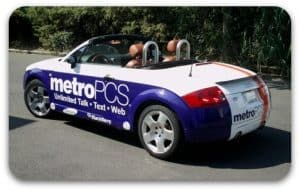Augmented reality flyer QR hybrids that give marketers real data
For years, flyers have been a staple of local marketing—handed out in stores, slipped under doors, or handed out at events. Adding AR to print adds visual magic, but it still leaves us guessing: Did anyone actually act on it? Enter the new wave of augmented reality flyer hybrids that combine QR codes + AR ads to power real-time engagement and measurable outcomes.
This blog explores how blending AR advertising with QR-driven tracking can close the loop between exposure and action—giving local brands the transparency they need to justify print budgets. Ready for a smarter way to track AR ads in the offline world? Let’s dive in.
Augmented reality flyer QR codes: The bridge between magic and metrics
AR brings static print to life—but it rarely tells you who took action afterward. QR codes fix that.
By embedding dynamic QR codes linked to localized campaign pages within an augmented reality flyer, marketers can:
Track who scanned and where
Measure how many users followed through
A/B test QR callouts vs. AR visual cues
Understand which creatives drive real world conversions
It’s a classic case of AR advertising meets digital accountability. Want proof a flyer lives on beyond the device screening it? Look no further than a branded landing page with conversion data tagged back to physical media.
Augmented reality flyer campaigns drive engagement in local venues
A typical scenario:
A boutique café near a health clinic distributes 5,000 AR-enhanced flyers with a unique QR code and AR animation of a smoothie.
When customers scan with their phone, they trigger an AR ad overlay, see daily specials, and are offered a “Buy One, Get One” coupon via QR landing page.
Marketers then track redemption, foot traffic, page views—all back to the augmented reality flyer source.
This real-world loop delivers measurable results—while still delighting users with immersive AR visuals.
Why QR + AR outperforms plain AR advertising campaigns
Let’s look at the benefits:
Measurable attribution – Plain AR ads get engagement metrics but not conversion data tied to when or how. QR bridges that gap.
Experience plus action – Users see an AR advertisement, scan the QR code, then land on a coupon or appointment page—all in 30 seconds.
Digital-physical fusion – This hybrid captures sensations of holding a flyer while tracking digital interaction.
Budget optimization – Track redemption rates to optimize print runs by venue or time of day.
In short: QR transforms AR advertisement from a showpiece into a performance engine.
Augmented reality flyer placements that convert
To get the most from your hybrid campaigns, consider these smart placements:
Clinics & Pharmacies
Place AR flyers with QR codes that animate bandages or vitamins. Then let consumers scan for instant wellness tips and appointment scheduling.
Local Events
Distribute AR-enabled handouts during farmers markets or local festivals. Scan QR to access promotions or future event reminders.
Retail & Cafés
Slip AR flyers into takeaway bags or attach to coffee sleeves. Once animated, users scan for loyalty program access or limited offers.
Each location offers micro-moments of attention where AR advertising has real impact—especially when the flyer feels personalized to the spot.
What marketers should track in AR + QR flyer campaigns
To truly optimize campaigns, track these key metrics:
Scan-to-AR activation rate – How many users actually launch the interactive experience? (e.g., 2,000 scans from 5,000 flyers = 40%)
Unique vs. repeat scans – See if people scan again at different locations.
Time spent in AR experience – Do you hold attention or just get a quick peek?
QR landing page actions – Coupons claimed, bookings made, emails collected.
Venue-based performance – Which pick-up spot drove the most redemptions?
These data points let you compare the real ROI of AR ads placed in specific zones or venues—making your AR marketing tool more than just a visual stunt.
Augmented reality flyer A/B testing for smarter outcomes
Traditional flyers can’t be tested mid-campaign—unless you distribute different print versions. But QR-driven augmented reality flyer campaigns can be optimized on the fly.
Try variations like:
Different CTAs (“Scan now” vs. “Tap to save”)
AR animation styles (product demo vs. brand mascot)
QR placement (corner vs. center)
Timing promotions (lunch happy hour vs. weekend offer)
Each variable drives different outcomes, and you can see which combinations yield the strongest conversion path from AR ad to action.
Security, privacy, and trust in AR-driven local campaigns
One concern with AR advertising is user privacy. People don’t like feeling tracked. But QR codes respect boundaries:
Users choose to scan
The QR code can be anonymous or request minimal data
Landing pages can prioritize user consent before capturing info
This balance keeps augmented reality flyer campaigns transparent—engaging without creepy retargeting or data harvesting.
Ending the disconnect: AR + QR = ROI-friendly print
Flyers were once judged by how many rooftops they hit. Now, the measurement bar is higher.
With an augmented reality flyer + QR architecture:
You see who scanned
Where they scanned
What they did next
And how much ROI each flyer delivered
This lets you close the loop between offline marketing and online behavior—building smarter campaigns that respect the digital-first mentality of modern consumers.
Final thoughts: The next wave of print is hybrid smart media
AR brings static print to life—but without attribution, it’s just novelty. QR tracking gives it purpose.
By using augmented reality flyer hybrids, marketers can deliver immersive experiences and measurable impact. It’s the fusion of emotion and efficiency, of spectacle and substance.
For marketing professionals serious about performance — and ditching vanity metrics — this is the future of local advertising. Make your AR ads measurable, accountable, and worth every printed page.






